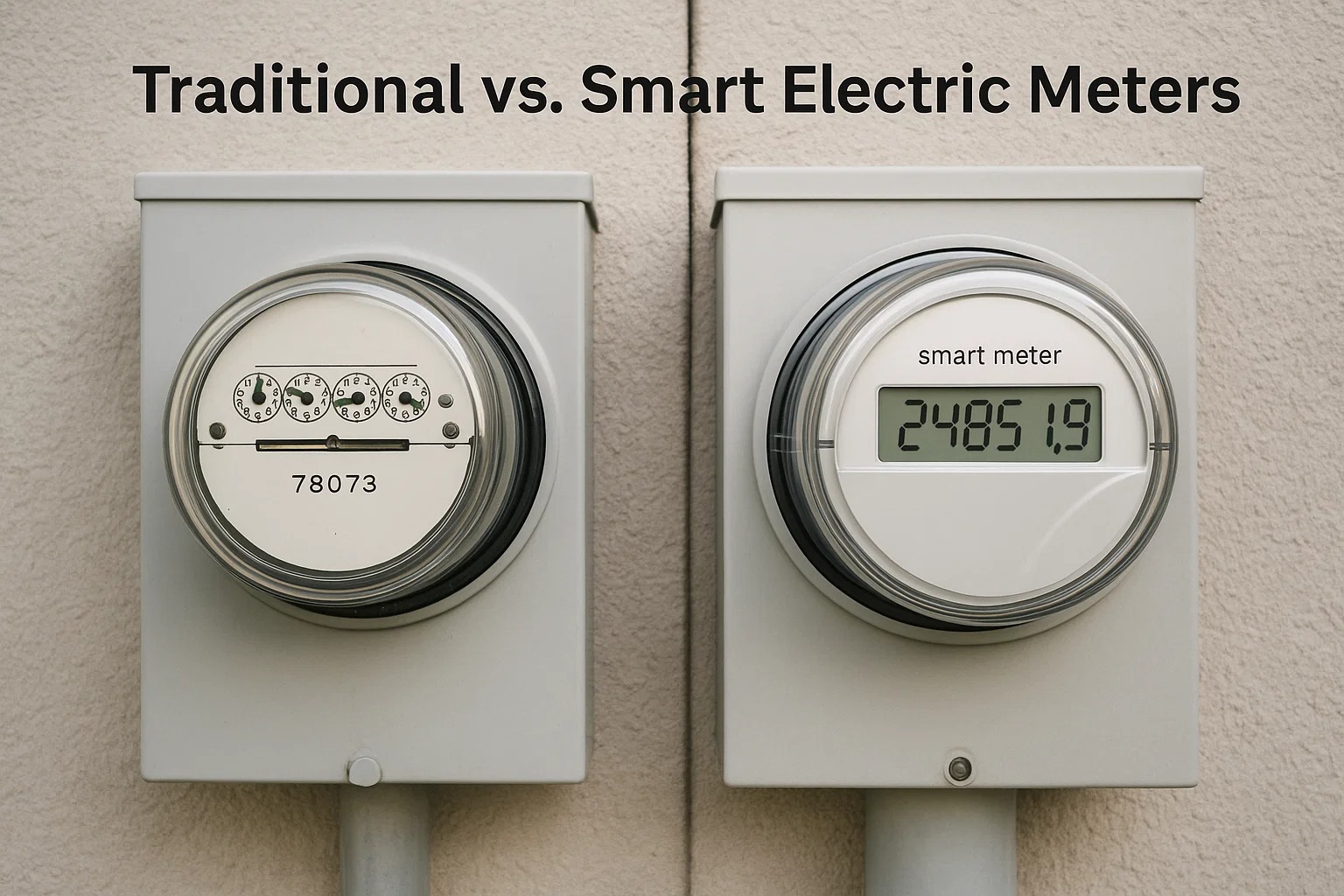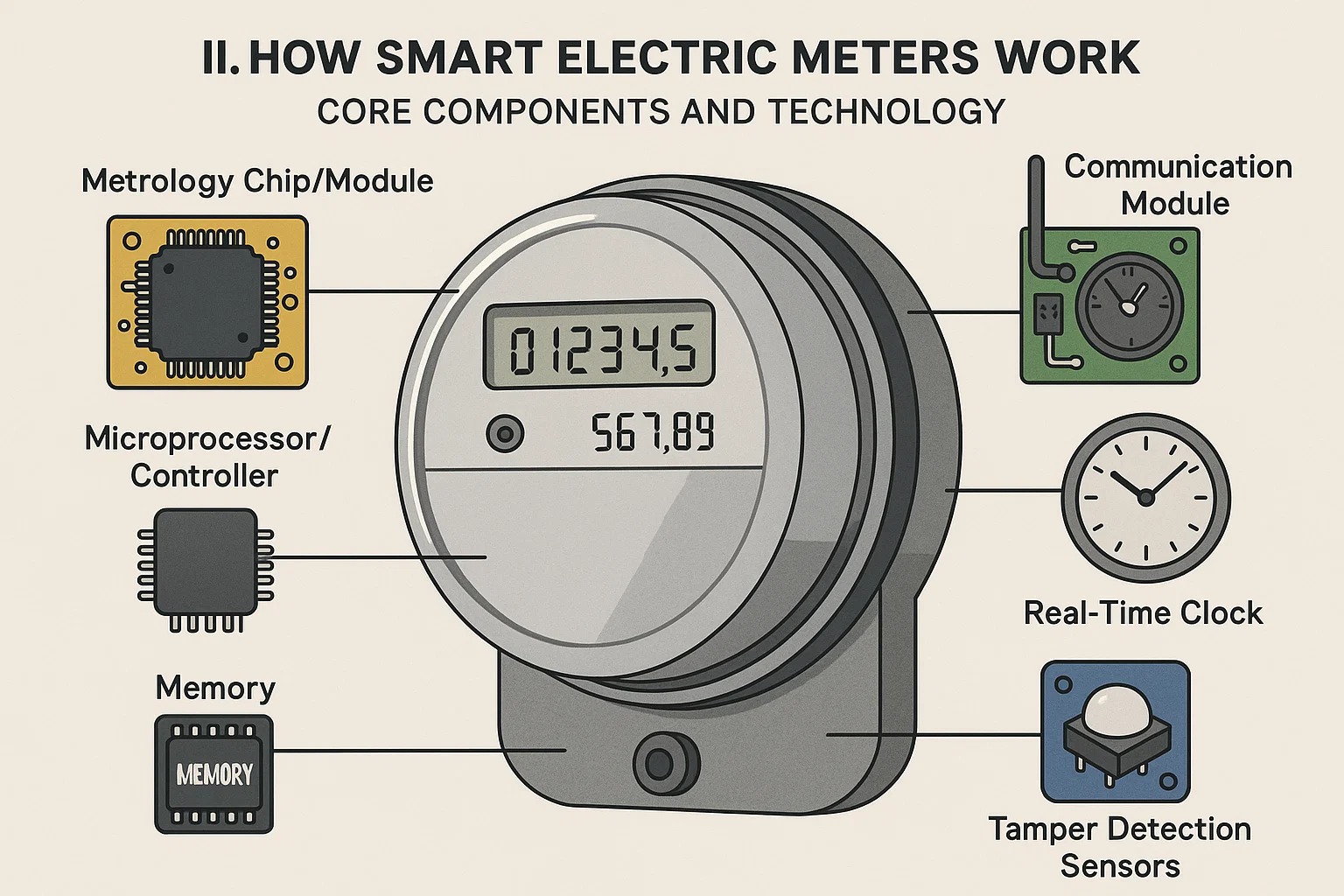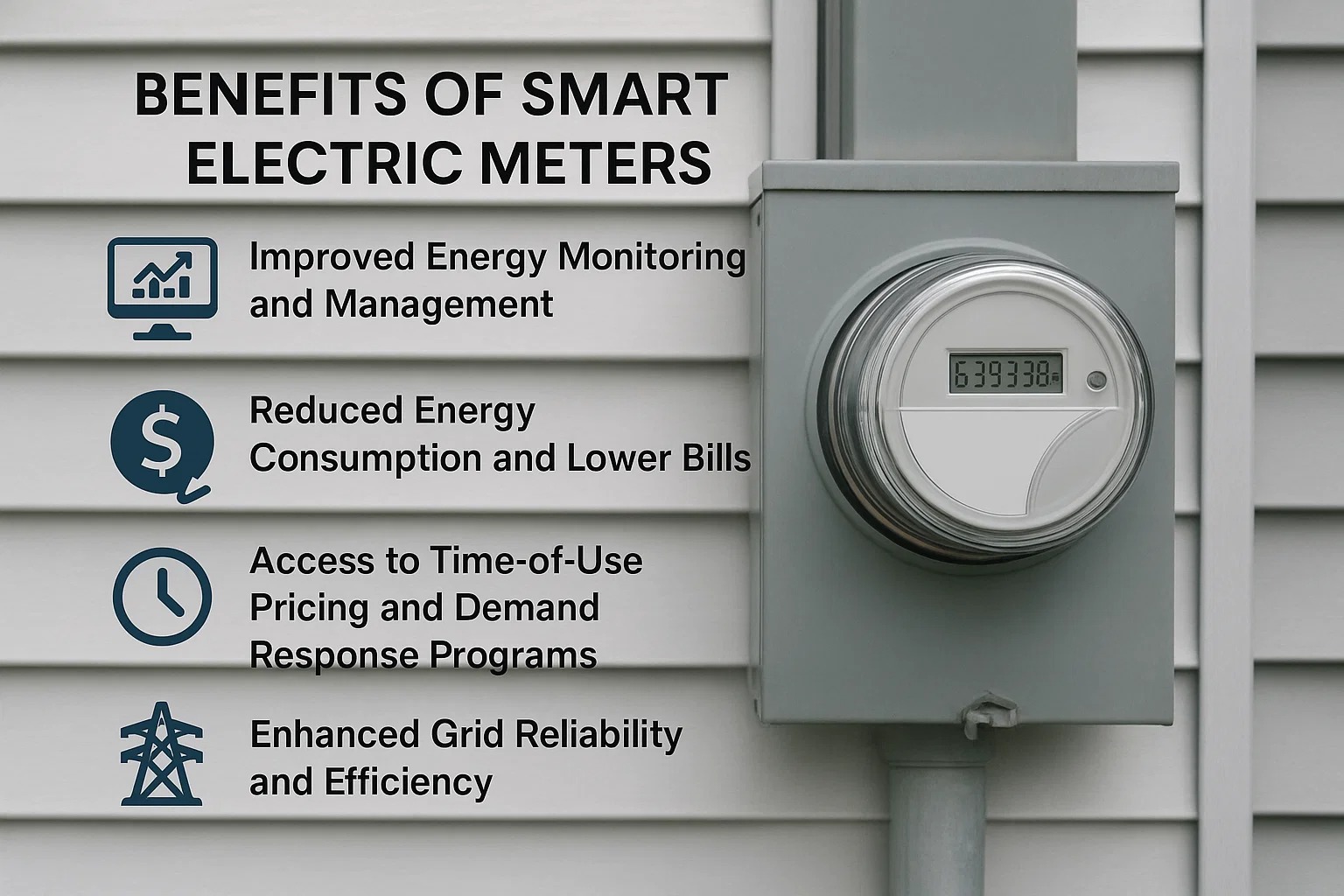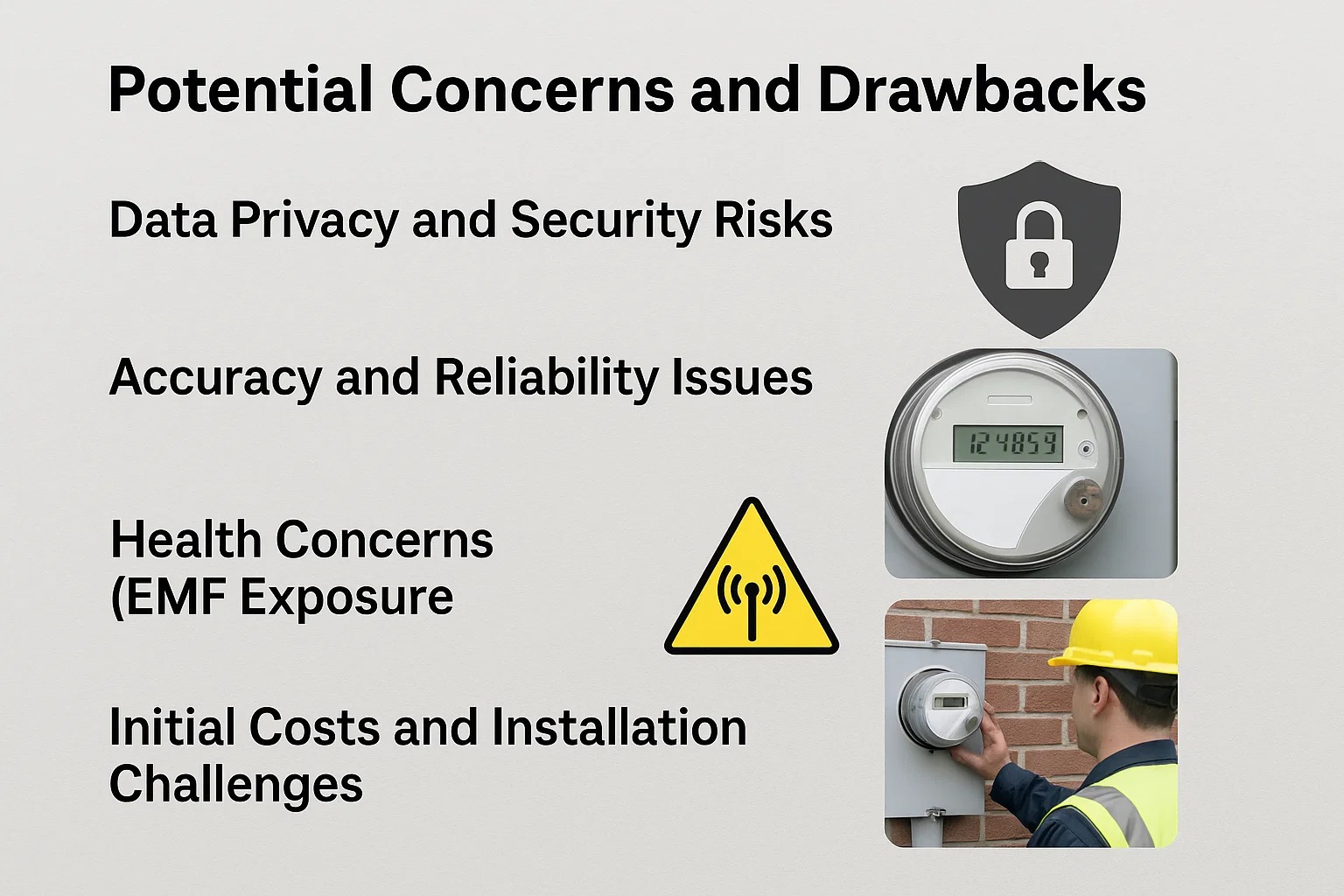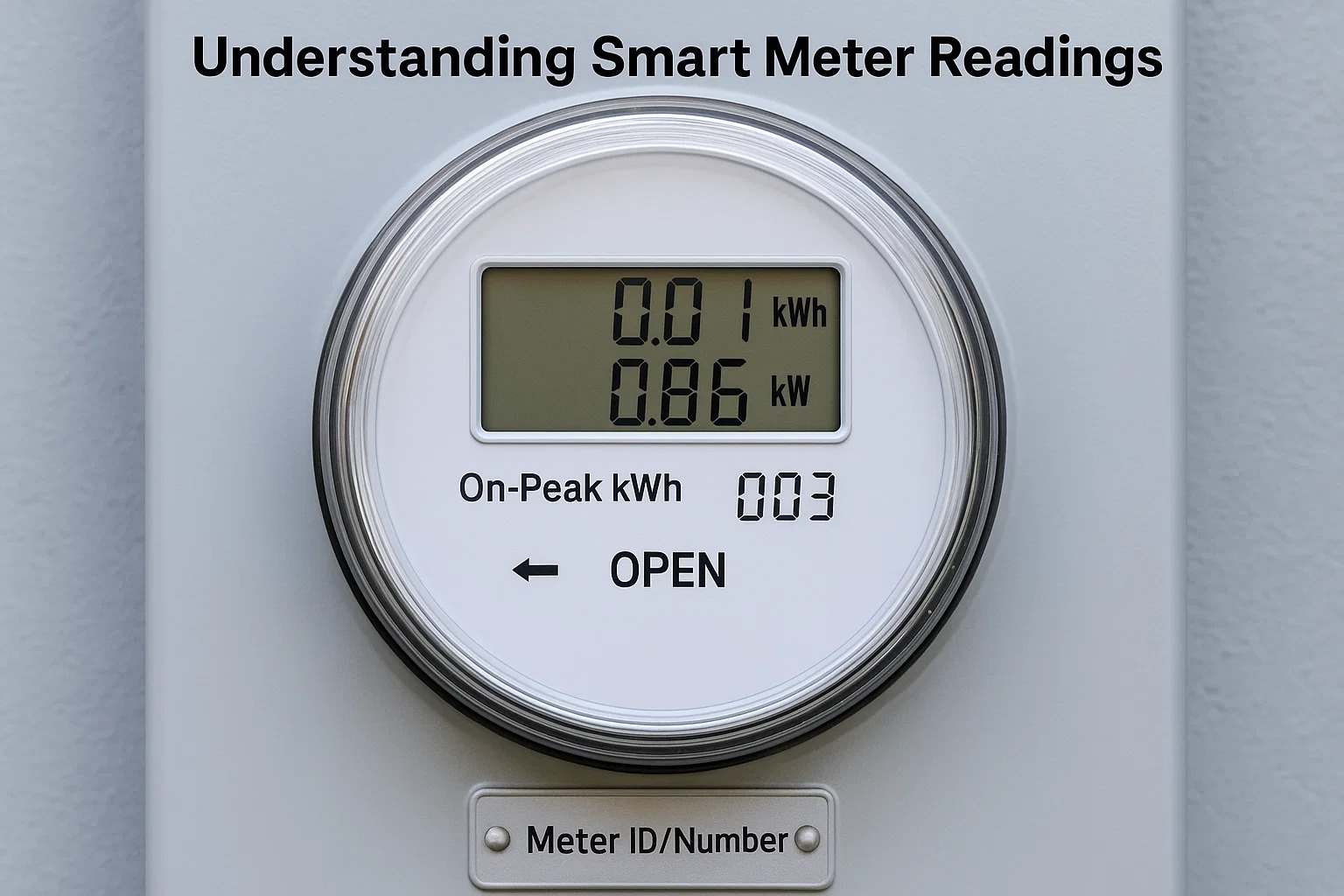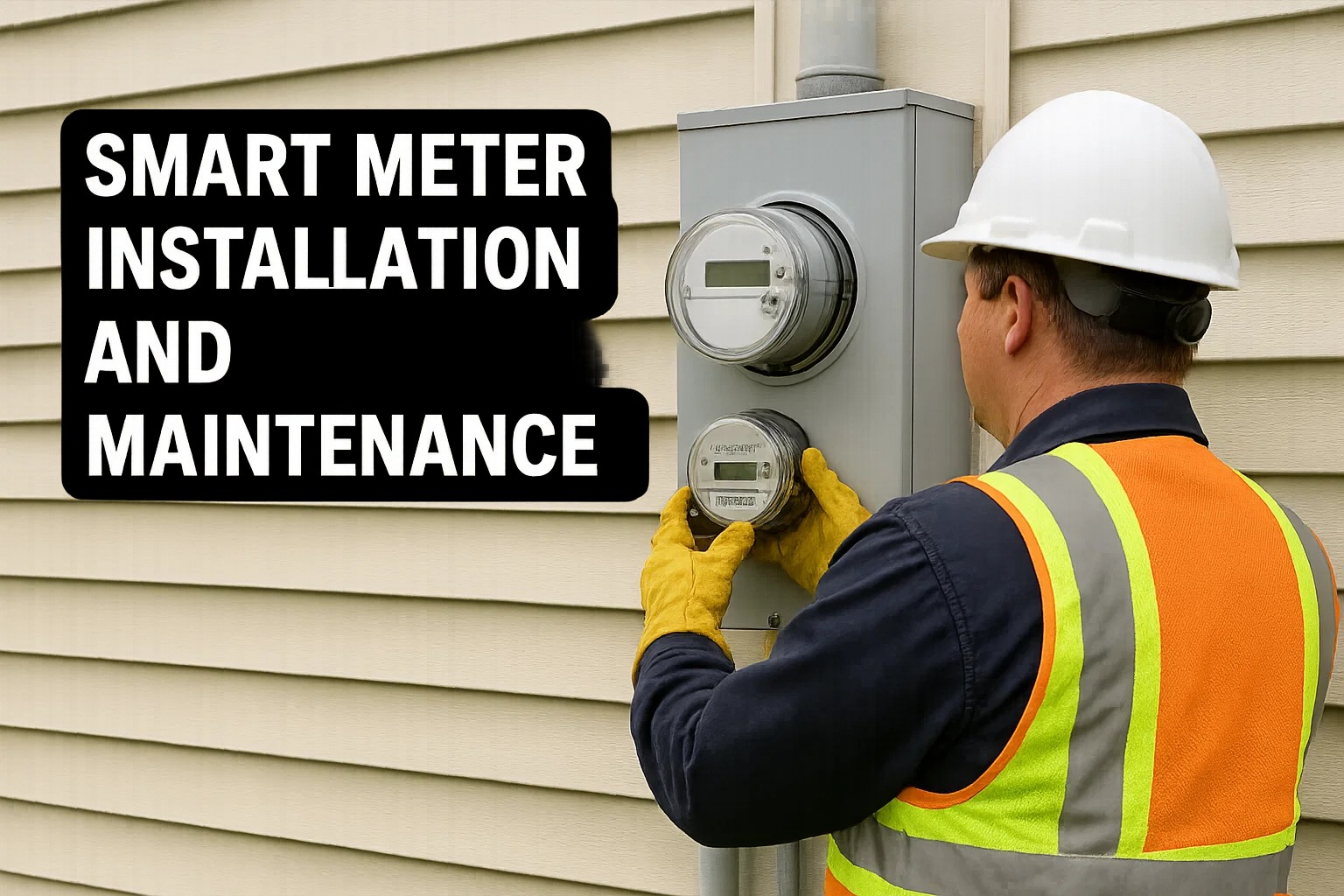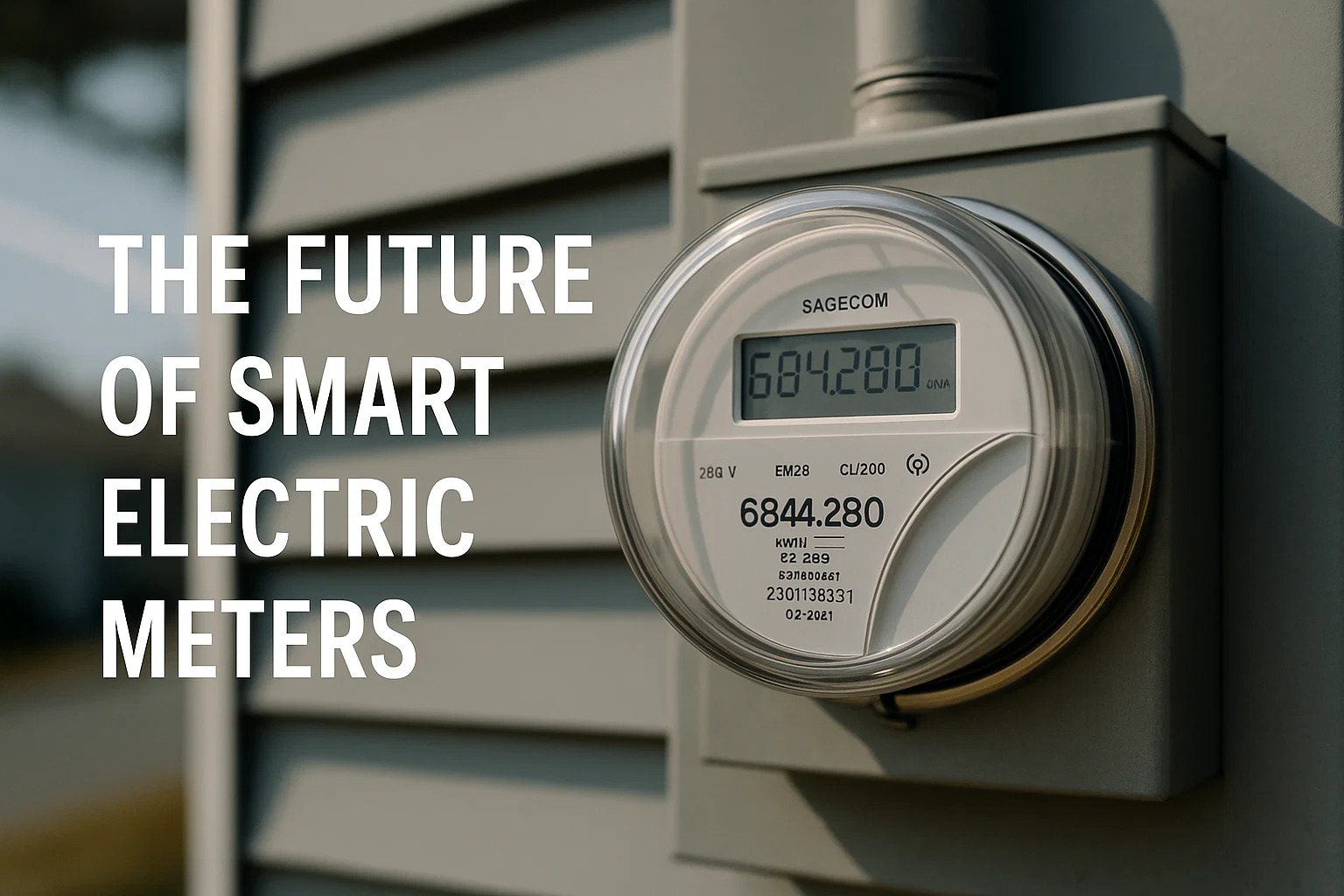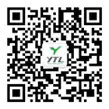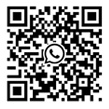I. Introduction to Smart Electric Meters
-
What are Smart Electric Meters?
Smart electric meters are sophisticated digital devices that replace traditional analog electricity meters. Their primary function is to accurately measure electricity consumption at regular, short intervals, typically every 15 minutes to an hour, and then securely transmit this data wirelessly to the utility company. Unlike their predecessors, smart meters offer much more than just a cumulative reading; they provide granular, time-stamped information about energy usage. This advanced capability makes them a foundational element of the modern "smart grid," enabling more efficient energy management for both consumers and utility providers. They are designed to be an interactive part of the electricity network, fostering a two-way flow of information rather than just a one-way measurement.
-
Traditional Electric Meters vs. Smart Meters: Key Differences
The transition from traditional electromechanical meters to smart digital meters represents a significant leap in how electricity consumption is measured, managed, and billed. The distinctions are numerous and impact various aspects of energy delivery and consumption.
Traditional vs. Smart Electric Meters: A Comparison
Feature Traditional Electric Meters Smart Electric Meters Technology Electromechanical, spinning disc with analog dials Fully digital, electronic with LCD display Data Collection Cumulative energy consumption, read manually by utility personnel, typically monthly. Interval data (e.g., every 15 minutes, hourly), automatically collected and transmitted wirelessly. Communication One-way: Meter records usage, utility reads it. No data sent to the meter. Two-way: Meter sends data to utility; utility can send commands/information to meter (e.g., disconnect, software updates). Billing Based on monthly or bimonthly manual readings or estimates. Often a flat rate per kWh. Based on actual, time-differentiated consumption data. Enables Time-of-Use (TOU) or dynamic pricing. Information Access Consumers have limited insight into daily or hourly usage; reliant on monthly bill. Consumers can access near real-time usage data via online portals, in-home displays, or mobile apps. Outage Detection Requires customer calls or manual checks by utility crews to identify outages. Automatic notification to utility when power goes out, enabling faster detection and restoration. Remote Operations Requires physical presence for connection, disconnection, or tamper detection. Allows for remote connection/disconnection, firmware updates, and advanced tamper detection. Grid Management Passive component; offers no real-time data for grid optimization. Active component; provides data essential for balancing supply and demand, managing voltage, and integrating renewables. -
The Rise of Smart Grids and the Role of Smart Meters
The "smart grid" is an evolving vision for modernizing electricity networks, transforming them from passive, centralized systems into intelligent, interactive, and resilient infrastructures. This transformation is driven by the need for greater efficiency, reliability, sustainability, and consumer engagement in the face of growing electricity demand, aging infrastructure, and the increasing integration of renewable energy sources.
Smart meters are the foundational building blocks of this smart grid vision. They act as the intelligent edge devices that connect every consumer to the advanced functionalities of the grid. Their pivotal role includes:
- Enabling Two-Way Information Flow: Smart meters facilitate the bidirectional communication that is central to the smart grid. They collect and transmit detailed consumption data from homes and businesses to the utility, and in turn, the utility can send signals back to the meters for various purposes, such as conveying real-time pricing or initiating demand response events.
- Facilitating Demand-Side Management (DSM): By providing consumers with access to their real-time energy consumption data and by enabling time-of-use or dynamic pricing structures, smart meters empower individuals to make informed decisions about when and how they use electricity. This helps shift consumption away from peak demand periods, reducing strain on the grid and potentially lowering energy bills for consumers.
- Integrating Renewable Energy Sources: The intermittent nature of renewable energy sources like solar and wind power poses challenges for grid stability. Smart meters contribute by providing granular data that helps utilities better predict demand and generation, allowing for more effective integration and management of these fluctuating power sources.
- Improving Grid Reliability and Resiliency: With the detailed data streams from smart meters, utilities gain visibility into the health and performance of their distribution networks. This enables faster detection of outages, more precise identification of fault locations, and quicker restoration of power. It also allows for proactive maintenance and better voltage management, a more stable and reliable grid.
- Optimizing Distribution and Reducing Losses: Real-time data from smart meters helps utilities understand energy flow patterns across their network. This intelligence allows them to optimize transformer loading, balance circuits, and identify areas of energy loss,greater operational efficiency and reduced waste.
In essence, smart meters are far more than just digital replacements for old meters; they are the eyes and ears of the smart grid, providing the critical data and communication pathways necessary to build a more efficient, sustainable, and responsive energy future.
II. How Smart Electric Meters Work
-
Core Components and Technology
Smart electric meters are sophisticated devices that integrate several key technologies to perform their functions. Unlike the purely mechanical nature of traditional meters, smart meters are essentially small, specialized computers with communication capabilities. Their primary components include:
- Metrology Chip/Module: This is the heart of the smart meter. It's a highly accurate electronic circuit that continuously measures various electrical parameters passing through the meter, such as voltage, current, power factor, and crucially, actual energy consumption (kilowatt-hours, kWh). It samples these parameters thousands of times per second to ensure precise measurements, even with fluctuating loads.
- Microprocessor/Controller: This acts as the "brain" of the meter. It processes the raw data from the metrology chip, performs calculations, manages the meter's various functions (like data storage, communication scheduling, and display updates), and executes commands received from the utility.
- Memory: Smart meters include different types of memory. Non-volatile memory stores configuration settings, firmware, and historical usage data (e.g., hourly consumption for several months) even if power is lost. Volatile memory (RAM) is used for active processing.
- Communication Module: This is a crucial component that enables the meter to communicate wirelessly. It typically includes a radio transceiver and antenna. Common communication technologies used in smart meters include:
- Cellular (e.g., 2G, 3G, 4G, 5G): Similar to mobile phones, these modules use public cellular networks for data transmission, often for meters in remote areas or where other network infrastructure is challenging.
- Power Line Communication (PLC): Data signals are modulated and transmitted over the existing power lines themselves, turning the electrical grid into a communication medium.
- Radio Frequency (RF) Mesh Networks: This is a very common architecture. Meters communicate with each other, forming a self-healing mesh network. Each meter acts as a repeater, passing data along to a central collector (often a dedicated smart meter or a separate device) that then transmits aggregated data to the utility via cellular or fiber. This provides redundancy and extends network reach.
- Real-Time Clock (RTC): An accurate internal clock is essential for timestamping consumption data correctly, enabling time-of-use billing and precise analysis of energy patterns.
- Display: Most smart meters feature an LCD display that shows current readings (e.g., total kWh consumed, current demand), meter status, and sometimes diagnostic codes.
- Tamper Detection Sensors: Smart meters are equipped with sensors to detect attempts at tampering or unauthorized access, enhancing security and preventing energy theft.
-
Real-Time Data Collection and Communication
The real power of smart meters lies in their ability to collect and transmit granular data automatically. This process involves several steps:
- Continuous Measurement: The metrology chip constantly measures electricity flow in precise increments (e.g., every few seconds or minutes).
- Interval Data Recording: The microprocessor aggregates these instantaneous measurements into predefined intervals, typically 15-minute, 30-minute, or hourly blocks. For each interval, the total kWh consumed is recorded, along with a timestamp. This creates a detailed load profile for the consumer.
- Local Storage: The collected interval data is stored in the meter's internal memory. This ensures data integrity even if communication is temporarily lost. Meters are designed to store months of data.
- Scheduled Transmission: At scheduled times (e.g., daily, multiple times a day), the meter's communication module initiates contact with the utility's data collection system. This could be directly via cellular, or indirectly by sending data to a local data collector in an RF mesh network.
- Secure Data Transmission: The data is encrypted and transmitted securely to protect privacy and prevent unauthorized access or manipulation. Various encryption standards and communication protocols are employed.
- Data Ingestion and Processing: Once received by the utility, the data is ingested into specialized Meter Data Management (MDM) systems. These systems validate the data, process it for billing, analyze consumption patterns, identify anomalies, and make it available for other utility applications and for consumer access (e.g., via an online portal).
-
Two-Way Communication: Meter to Utility and Back
One of the significant advancements offered by smart meters is their two-way communication capability, which transforms the traditional one-way meter reading process into an interactive dialogue between the utility and the consumer's premises.
-
Meter to Utility (Uplink):
- Consumption Data: As detailed above, the primary uplink is the transmission of interval energy consumption data for billing and analysis.
- Outage Notifications: If power goes out at the meter location, many smart meters are designed to send an immediate "last gasp" signal to the utility before losing power, or to report restoration once power returns. This significantly improves outage detection and response times.
- Tamper Alerts: If the meter detects any unauthorized attempts to interfere with its operation, it can send an alert to the utility.
- Diagnostic Information: Meters can report their operational status, signal strength, battery life (for some types), and any internal errors, aiding in remote troubleshooting.
-
Utility to Meter (Downlink):
- Remote Connect/Disconnect: Utilities can remotely activate or deactivate power to a premise, which is highly efficient for new connections, disconnections for non-payment, or seasonal service changes, eliminating the need for a truck roll.
- Firmware Updates: New features, bug fixes, or security patches can be pushed wirelessly to the meter, ensuring it remains up-to-date without physical intervention.
- Rate Changes: Utilities can send signals to the meter to update pricing structures, enabling dynamic or time-of-use rates that change based on grid conditions or time of day.
- Demand Response Signals: For homes participating in demand response programs, the utility can send signals to the meter (or directly to smart appliances via the meter's home area network gateway) to reduce energy consumption during peak periods, for example, by slightly adjusting thermostat settings or cycling specific appliances.
- Meter Configuration: Various operational parameters of the meter can be remotely configured or adjusted by the utility.
This two-way communication backbone is what truly empowers the smart grid, enabling real-time responsiveness, enhanced control, and a much more efficient and reliable electricity delivery system.
-
III. Benefits of Smart Electric Meters
Smart electric meters bring a multitude of advantages, transforming the energy landscape for various stakeholders. These benefits span from empowering individual consumers with better control over their energy use to enhancing the stability and sustainability of the entire electrical grid.
-
For Consumers:
Smart meters offer consumers visibility and control over their electricity consumption, get to more informed decisions and potential savings.
-
Improved Energy Monitoring and Management: Traditional meters provide only a cumulative reading once a month, offering no insight into when energy is used or by which appliances. Smart meters, however, record consumption in short intervals (e.g., every 15-60 minutes). This granular data is typically accessible to consumers via online portals, dedicated in-home displays (IHDs), or mobile applications. This real-time access allows consumers to:
- See their energy usage patterns throughout the day, week, and month.
- Identify energy-hungry appliances or habits.
- Understand the impact of specific actions (e.g., running the washing machine at a certain time, turning off lights) on their consumption.
- Set energy consumption goals and track progress.
-
Reduced Energy Consumption and Lower Bills: The adage "what gets measured gets managed" holds true for energy. With detailed information at their fingertips, consumers become more aware of their energy footprint. This awareness often leads to behavioral changes, such as:
- Turning off lights and electronics when not in use.
- Adjusting thermostat settings.
- Upgrading to more energy-efficient appliances.
- Shifting energy-intensive tasks (like laundry or dishwashing) to off-peak hours if time-of-use rates are in effect. Studies have shown that providing consumers with real-time energy feedback can get to energy savings ranging from 2% to 15%, directly translating into lower monthly electricity bills.
-
Access to Time-of-Use Pricing and Demand Response Programs: Smart meters enable utilities to implement Time-of-Use (TOU) pricing, where the cost of electricity varies depending on the time of day, day of the week, or season. Electricity is more expensive during "peak" demand hours (e.g., weekday afternoons/evenings) and cheaper during "off-peak" hours (e.g., nights and weekends). This incentivizes consumers to shift energy-intensive activities to off-peak times, reducing stress on the grid during critical periods.
Smart meters also facilitate participation in Demand Response (DR) programs. These voluntary programs encourage consumers to reduce their electricity use during periods of high demand or grid emergencies, in exchange for financial incentives or bill credits. For example, a utility might offer a rebate to customers who allow their smart thermostat to be adjusted by a few degrees during a heatwave.
Example of Time-of-Use (TOU) Pricing Structure
Time Period Typical Schedule Price (Relative) Incentive for Consumers Peak 4 PM - 9 PM (Monday - Friday) Highest Encourage shifting energy-intensive activities (e.g., laundry, EV charging, heavy cooking) to other periods to avoid higher costs. Off-Peak 9 AM - 4 PM (Monday - Friday) <br> Weekend Afternoons (e.g., 9 AM - 9 PM) Medium Moderate incentive to use appliances during these times as costs are lower than peak. Super Off-Peak 9 PM - 9 AM (Monday - Friday) <br> Weekends & Holidays (e.g., all day) Lowest Strong incentive to use major appliances (e.g., dishwashers, clothes dryers, EV charging) during these hours.
-
-
For Utilities:
Smart meters are transformative tools for utility companies, significantly enhancing their operational efficiency, reliability, and planning capabilities.
-
Enhanced Grid Reliability and Efficiency: The granular data from smart meters provides utilities with anreal-time view of electricity consumption across their network. This allows them to:
- Better manage supply and demand: By understanding load patterns, utilities can more accurately predict demand and optimize generation resources, less wasted energy and more stable grid operations.
- Optimize voltage levels: Smart meters can provide voltage readings, allowing utilities to make precise adjustments to voltage regulators, reducing line losses and improving power quality for consumers.
- Identify overloaded circuits: Granular data helps pinpoint areas of excessive demand, enabling proactive upgrades and preventing equipment failures.
-
Remote Meter Reading and Reduced Operational Costs: One of the immediate and tangible benefits for utilities is the elimination of manual meter reading. Smart meters automatically transmit data, which leads to:
- Significant labor cost savings: No need for meter readers to physically visit every property.
- Reduced fuel consumption: Fewer utility vehicles on the road.
- Improved safety: Fewer workers in potentially hazardous environments.
- More accurate billing: Based on actual consumption, not estimates, reducing customer service calls related to billing discrepancies.
- Faster customer service: Remote access to consumption data helps resolve billing inquiries more quickly.
-
Better Outage Detection and Response: Smart meters significantly improve a utility's ability to detect, locate, and respond to power outages.
- Automatic Outage Notification: When power goes out at a meter, it can send a "last gasp" signal to the utility before losing power, or a "power restored" signal upon restoration. This provides immediate notification, often before customers even call.
- Precise Outage Location: By aggregating outage signals from multiple meters, utilities can quickly and accurately pinpoint the exact location of a fault on the grid (e.g., a specific transformer or power line segment), rather than relying on customer reports which might be vague.
- Faster Restoration: Knowing the precise location of an outage allows crews to be dispatched more efficiently, reducing restoration times and improving customer satisfaction.
-
-
For the Environment:
Beyond individual and operational benefits, smart meters play a crucial role in advancing environmental sustainability goals.
-
Support for Renewable Energy Integration: Renewable energy sources like solar and wind power are intermittent (they only generate when the sun shines or the wind blows). The traditional grid struggles with this variability. Smart meters contribute by:
- Providing real-time demand data: This helps grid operators balance the fluctuating supply from renewables with real-time demand.
- Enabling distributed generation: Smart meters can measure power flowing both into and out of a home (e.g., from rooftop solar panels), facilitating net metering and the integration of small-scale renewable systems into the grid.
- Facilitating storage solutions: Better data helps optimize the charging and discharging of battery storage systems, which are key to managing renewable intermittency.
-
Reduced Carbon Emissions: The various efficiencies enabled by smart meters collectively to a reduction in carbon emissions:
- Reduced energy consumption: When consumers use less electricity due to increased awareness and TOU pricing, less electricity needs to be generated, directly reducing emissions from power plants.
- Optimized grid operations: A more efficient grid with less line loss and better load balancing means less energy is wasted during transmission and distribution, reducing the overall demand for generation.
- Integration of renewables: By making it easier to incorporate more solar and wind power into the energy mix, smart meters accelerate the transition away from fossil fuels, a cleaner energy supply.
- Reduced truck rolls: Fewer vehicles for manual meter readings and outage assessments contribute to lower transportation-related emissions from utilities.
-
In summary, smart meters are not just a technological upgrade; they are a fundamental component of a more intelligent, efficient, and sustainable energy ecosystem, delivering tangible benefits across the board.
IV. Potential Concerns and Drawbacks
While smart electric meters offer numerous benefits, their widespread deployment has also raised valid concerns among consumers, privacy advocates, and public health organizations. It's crucial to understand these potential drawbacks to have a comprehensive view of the technology.
-
Data Privacy and Security Risks
One of the frequently cited concerns is the vast amount of granular data smart meters collect and the potential implications for privacy and security.
- Detailed Consumption Data: Smart meters record energy usage at short intervals (e.g., every 15 minutes). This detailed data can reveal much about a household's activities, such as:
- Occupancy patterns: When people are home or away, based on overall energy use.
- Daily routines: Waking hours, sleeping patterns, and meal preparation times.
- Appliance usage: Inference of appliance types (e.g., when a large dryer or EV charger is run) and their operational patterns.
- Lifestyle insights: Whether someone works from home, has late-night habits, or goes on vacation.
- Potential for Misuse: Concerns arise regarding who has access to this data (utility, third-party vendors, government agencies) and how it might be used. Potential scenarios include:
- Targeted marketing for energy-efficient products or services based on usage patterns.
- Law enforcement access without a warrant (though utilities generally have policies requiring warrants or subpoenas).
- Sale of aggregated or anonymized data, though raw individual data is typically highly protected.
- Cybersecurity Threats: Like any networked device, smart meters are susceptible to cyberattacks. Potential risks include:
- Data breaches: Hackers gaining access to sensitive consumption data.
- Grid instability: Malicious actors attempting to manipulate meters to cause widespread outages or overload sections of the grid.
- Billing fraud: Tampering with meters to alter readings.
- Denial-of-service attacks: Flooding the network with data to disrupt communication.
Mitigation Efforts: Utilities and regulatory bodies implement robust security measures, including data encryption, secure communication protocols, strong access controls, and regular cybersecurity audits to protect data and the grid. Legislation and utility privacy policies also aim to govern data access and use.
- Detailed Consumption Data: Smart meters record energy usage at short intervals (e.g., every 15 minutes). This detailed data can reveal much about a household's activities, such as:
-
Accuracy and Reliability Issues
While smart meters are designed to be highly accurate, concerns about their reliability and the correctness of readings have emerged in some instances.
- Reported Inaccuracies: A small number of studies and consumer complaints have reported instances where smart meters allegedly registered higher consumption than traditional meters, or appeared to over-read usage for certain types of electrical loads (e.g., older appliances, dimmer switches). While these cases are often isolated and sometimes attributed to specific meter models or installation conditions, they fuel public skepticism.
- Software Glitches and Firmware Errors: As digital devices, smart meters run on software. Like any software, it can have bugs or require updates. A faulty firmware update or a software glitch could potentially get to incorrect readings or communication failures.
- Meter Failure and Communication Drops: Although designed for robustness, meters can malfunction, or their communication signals can be interrupted by environmental factors, infrastructure issues, or network congestion, get to gaps in data collection or delayed billing.
- Billing Disputes: When consumers see an unexpected spike in their bill after a smart meter installation, it can get to distrust, even if the increase is due to actual usage that was previously under-estimated by older, less accurate traditional meters, or if they are now on a time-of-use rate they don't understand.
Potential Accuracy/Reliability Issues and Responses
Issue Category Specific Manifestation Potential Impact Mitigation and Response Inaccurate Readings Smart meter readings higher than expected; anomalous behavior with specific loads. Overcharging consumers, disputes. Rigorous factory testing and calibration; adherence to national accuracy standards; utility-offered meter testing services. Software/Firmware Bugs Incorrect billing calculations; disrupted data transmission. Inaccurate billing; data loss; compromised grid management. Regular software updates and patches; remote diagnostics; redundant data storage mechanisms. Communication Failures Data not transmitted promptly; meter loses connection with the system. Delayed billing; lack of real-time monitoring; impacts grid management. Diversified communication technologies (cellular, RF Mesh); network redundancy; automatic reconnection protocols. Physical Meter Failure Meter hardware malfunction or stops operating. Failure to record energy usage; potential power outages. High-quality component selection; remote diagnostic capabilities; rapid replacement services. -
Health Concerns (EMF Exposure)
Some individuals and groups have raised concerns about potential health effects from the electromagnetic fields (EMF) emitted by smart meters.
- Nature of Emissions: Smart meters use radio frequency (RF) radiation to communicate wirelessly, similar to cell phones, Wi-Fi routers, and cordless phones. These emissions are non-ionizing, meaning they do not have enough energy to directly damage DNA.
- Comparison to Other Devices: The RF emissions from smart meters are typically intermittent (they transmit data for only a few minutes or seconds per day) and generally much lower in power than many common household devices.
- A smart meter's RF exposure level at a distance of 1 foot is often significantly less than that from a typical cell phone held to the ear or a Wi-Fi router in close proximity.
- The meter itself is usually located outside the home, providing greater distance from occupants compared to in-home Wi-Fi.
RF Exposure Comparison: Smart Meters vs. Common Devices
Device Type Radiation Type / Frequency Typical Exposure Pattern RF Exposure Level (Relative to Outdoor Smart Meter) Smart Meter RF (900MHz-2.4GHz) Intermittent transmission (seconds/minutes daily) Baseline Mobile Phone RF (800MHz-2.6GHz+) Close contact during calls/data use Often Significantly Higher Wi-Fi Router RF (2.4GHz/5GHz) Continuous emission, typically indoors Often Significantly Higher Microwave Oven Microwave (2.45GHz) High-power localized radiation during operation Very High (but typically well-shielded) Cordless Phone RF (Various Frequencies) Close contact during calls Often Higher - Scientific Consensus: Major health organizations and scientific bodies, including the World Health Organization (WHO), the U.S. Federal Communications Commission (FCC), the American Cancer Society (ACS), and various national health agencies, have reviewed the scientific evidence regarding RF emissions from smart meters and other wireless devices. Their general consensus is that there is no compelling scientific evidence to suggest that RF emissions from smart meters, at typical exposure levels, pose a health risk to the general public. Research on long-term effects of low-level RF exposure is ongoing.
-
Initial Costs and Installation Challenges
The transition to smart meters involves significant upfront investment and can present logistical challenges during deployment.
-
High Upfront Investment for Utilities: Implementing a smart meter infrastructure requires substantial capital expenditure from utilities. This includes:
- Purchasing millions of smart meters.
- Developing or acquiring the communication network infrastructure (e.g., cellular contracts, RF mesh network collectors).
- Implementing complex Meter Data Management (MDM) systems and other IT upgrades to handle the massive influx of data.
- Training personnel. These costs are ultimately borne by ratepayers, either through rate increases or specific surcharges, consumer complaints about higher bills before realizing the benefits.
-
Installation Logistics and Challenges: Deploying smart meters to millions of homes and businesses is a massive logistical undertaking.
- Coordination: Scheduling installations, notifying customers, and managing large workforces.
- Access Issues: Gaining access to meters located behind locked gates, inside homes (less common for electric meters, but can occur), or in difficult-to-reach areas.
- Older Infrastructure: In some cases, older meter bases or wiring may need to be upgraded or repaired during installation, get to unexpected costs or delays.
- Customer Inconvenience: Brief power outages (typically a few minutes) are usually required during installation, which can be inconvenient for customers, especially businesses or those with sensitive medical equipment.
- Public Resistance: Some communities or individual customers may actively resist installation due to privacy or health concerns, creating additional challenges for utilities.
-
Understanding these potential concerns and how they are being addressed is vital for a comprehensive view of smart electric meters and their integration into modern energy systems.
V. Understanding Smart Meter Readings
One of the most empowering aspects of smart electric meters for consumers is their ability to provide unprecedented insight into energy consumption. However, to leverage this benefit, it's essential to understand how to read and interpret the data they provide.
-
Decoding the Display: Key Metrics and Information
Unlike traditional analog meters with spinning dials, smart meters feature a digital display, usually an LCD screen, that cycles through various readings. While the exact information and its sequence can vary by meter model and utility, here are the key metrics and information you're likely to see:
- Kilowatt-hours (kWh): This is the get important reading, representing the total amount of electricity consumed. It's the basis for your electricity bill. The display might show a large number, often preceded by "kWh" or a specific code (e.g., "001" or "01"). This number continuously increases as you consume electricity.
- Current Demand (kW): This indicates the instantaneous rate at which your home is using electricity at that precise moment. It's measured in kilowatts (kW) and can fluctuate rapidly as appliances turn on or off. Understanding your peak demand can be particularly relevant for tariffs that include a demand charge.
- Time-of-Use (TOU) Registers: If your utility offers Time-of-Use pricing, your smart meter will often have separate registers to track consumption during different rate periods (e.g., "On-Peak kWh," "Off-Peak kWh," "Mid-Peak kWh"). The display might cycle through these distinct readings, often identified by specific codes or labels.
- Direction of Flow (Net Metering): For homes with solar panels or other distributed generation, the meter may show an arrow or specific indicators to denote the direction of electricity flow. An arrow pointing towards the home means you're importing electricity from the grid, while an arrow pointing away means you're exporting excess electricity back to the grid. This is crucial for net metering.
- Meter Status/Error Codes: The display might show messages or codes indicating the meter's operational status (e.g., "OPEN" for a disconnected service) or any detected errors.
- Meter ID/Number: A unique identifier for your specific meter.
Tip: Your utility provider usually offers guides or online resources explaining how to read your specific smart meter model and interpret its display codes.
Common Smart Meter Display Indicators
Indicator/Code Description Significance kWh Total accumulated kilowatt-hours consumed. Primary unit for billing. kW Instantaneous kilowatt usage (current demand). Shows real-time power draw; relevant for demand charges. On-Peak kWh Energy consumed during high-rate periods. Helps track costs on TOU plans. Off-Peak kWh Energy consumed during low-rate periods. Shows potential for savings by shifting usage. Arrow → Electricity flowing into the home (importing from grid). Standard consumption from utility. Arrow ← Electricity flowing out of the home (exporting to grid). Indicates excess generation (e.g., solar) being sent back. "OPEN" Service is currently disconnected. Indicates power is off at the meter. Numeric Codes Specific utility-defined registers or error messages. Consult utility guide for exact meaning. -
Monitoring Your Energy Usage Patterns
While the meter's display offers basic information, the real power of smart meters for consumers comes from accessing the detailed, granular data through other channels provided by the utility:
- Online Portals/Websites: Most utilities offer secure online accounts where customers can log in to view their energy usage data. This typically includes:
- Graphs and Charts: Visual representations of consumption over time (daily, hourly, 15-minute intervals).
- Historical Data: Access to past consumption patterns, allowing for comparisons year-over-year or month-over-month.
- Cost Estimates: Tools to project monthly bills based on current usage.
- Notifications/Alerts: Options to set up alerts for high usage or when approaching a budget limit.
- Mobile Applications: Many utilities provide smartphone apps that offer similar functionalities to their online portals, making it convenient to check usage on the go.
- In-Home Displays (IHDs): Some utilities provide or offer these separate devices that communicate directly with the smart meter. IHDs show real-time energy consumption and sometimes cost information directly in the home, offering an immediate visual cue for energy use.
By regularly checking these platforms, consumers can develop a deep understanding of their unique energy footprint. For example, they might notice that their consumption occurs between 6 PM and 9 PM due to cooking and entertainment, or that a significant baseline load persists overnight.
- Online Portals/Websites: Most utilities offer secure online accounts where customers can log in to view their energy usage data. This typically includes:
-
Identifying and Addressing Energy Waste
Understanding your energy usage patterns is the step; the next is to use that knowledge to identify and act on opportunities for waste reduction. Smart meter data empowers consumers to become "energy detectives":
- Spotting Energy Spikes: Reviewing hourly or 15-minute data can help identify sudden increases in consumption that correspond to specific appliance usage (e.g., a clothes dryer, an electric oven, or an old refrigerator kicking on frequently).
- Analyzing "Vampire Load" / Standby Power: Even when appliances are "off," many still draw power in standby mode (phantom load). By observing your consumption period (e.g., overnight when everyone is asleep and appliances are off), you can estimate your baseline "vampire load." If this number is unexpectedly high, it suggests appliances that are always plugged in are drawing significant power.
- Optimizing Time-of-Use Habits: For those on TOU rates, understanding when peak rates apply and seeing how their usage aligns with those times can motivate them to shift high-consumption activities (like running dishwashers, washing machines, or charging EVs) to off-peak or super off-peak hours.
- Evaluating Efficiency Upgrades: After implementing energy efficiency measures (e.g., new windows, better insulation, LED lighting, new HVAC), smart meter data provides measurable proof of savings, reinforcing positive behavior.
- Troubleshooting Issues: An unexplained, persistent spike in energy consumption could indicate a faulty appliance, an electrical issue, or even a water leak (if heating water constantly). The granular data helps pinpoint when the anomaly began.
By actively engaging with the data provided by smart meters, consumers can transform abstract energy consumption into actionable insights, get to significant savings and a reduced environmental footprint.
VI. Smart Meter Installation and Maintenance
The deployment of smart electric meters involves a well-defined installation process and ongoing maintenance considerations to ensure their reliable operation. Understanding these aspects can help consumers know what to expect and how to handle potential issues.
-
The Installation Process: What to Expect
The installation of a smart electric meter is typically a straightforward procedure, often managed by utility company personnel or their authorized contractors. Here's a general overview of what consumers can expect:
- Notification: Utilities usually provide advance notice to customers about the upcoming smart meter installation. This notification might come via mail, email, phone call, or a door hanger, informing them of the date and expected time frame for the installation. It often includes details about the brief power interruption.
- Arrival of Crew: On the scheduled day, a utility technician or contractor will arrive at the property. They will typically be in a marked vehicle and wear identifiable uniforms with company logos.
- Pre-Installation Check: The technician will perform a visual inspection of the existing meter and the surrounding area (e.g., meter box, wiring, electrical service entrance) to ensure it's safe and ready for the swap. They might also check for any outstanding issues or potential hazards.
- Brief Power Interruption: For safety reasons and to correctly install the new digital meter, the power to the premise usually needs to be temporarily shut off. This typically lasts for a very short period, often just a few minutes (e.g., 2-10 minutes). Customers are usually advised in advance to save computer work, unplug sensitive electronics, or make arrangements for medical devices.
- Meter Swap: The technician will carefully remove the old analog meter from its socket and securely install the new smart meter. This involves a direct exchange into the existing meter base.
- Post-Installation Check: Once the smart meter is installed, the power will be restored. The technician will verify that the meter is functioning correctly, communicating with the utility's network, and that power has been successfully restored to the premise. They may also check the meter's display to confirm basic readings.
- Information/Confirmation: The technician might leave behind an information packet or verbally confirm the installation is complete and answer any immediate questions the customer may have.
Typical Smart Meter Installation Steps
Step Description Expected Duration / Impact 1. Advance Notification Utility informs customer of planned installation date/time. Days to weeks before installation. 2. Technician Arrival Qualified crew arrives, identified by uniform/vehicle. On scheduled day. 3. Pre-Installation Check Visual inspection of old meter and service area for safety/readiness. Few minutes. 4. Power Interruption Temporary shut-off of electricity to the premise. 2-10 minutes (brief outage). 5. Meter Exchange Removal of old meter, installation of new smart meter into existing socket. Few minutes during outage. 6. Power Restoration & Check Power is turned back on; technician verifies meter function and communication. Few minutes after meter swap. 7. Customer Information Technician provides brief instructions or leaves informational materials. Few minutes after power is restored. -
Potential Issues During Installation
While smart meter installations proceed smoothly, a few issues can occasionally arise:
- Unexpectedly Long Outage: Although rare, complications during the meter swap (e.g., issues with the meter base, faulty wiring requiring immediate repair) can extend the power outage beyond the expected few minutes.
- Damage to Meter Base or Service Entrance: In older homes, the meter base or wiring get to it might be brittle or damaged. The act of removing the old meter could expose or exacerbate these issues, potentially requiring additional repairs by the utility or even by the homeowner's electrician.
- Communication Failures: Immediately after installation, the new smart meter might not establish a connection with the utility's network. This could be due to signal strength issues, network congestion, or a faulty communication module. The technician would typically attempt to resolve this on-site or schedule a follow-up.
- Customer Concerns/Resistance: Some customers might express strong opposition to the installation, citing privacy or health concerns. While utilities generally have policies regarding opt-out options (which may incur fees), resistance can complicate the process.
- Disrupted Home Systems: If the power outage is longer than expected, or if sensitive electronics are not unplugged, it could potentially cause issues with certain home systems (e.g., computer crashes, security system glitches, smart home device reconfigurations).
-
Maintenance and Troubleshooting Tips
Smart electric meters are designed to be low-maintenance and highly reliable once installed. Most maintenance is handled remotely by the utility. However, here are some general tips and what to do if you suspect an issue:
-
Utility's Role in Maintenance:
- Remote Monitoring: Utilities continuously monitor the operational status and communication health of their smart meters from a central location.
- Remote Diagnostics: Many issues can be diagnosed and even resolved remotely (e.g., rebooting the meter, pushing firmware updates).
- Proactive Replacement: Utilities often have programs to replace meters that show signs of impending failure or that are approaching the end of their expected service life.
- Software Updates: Firmware updates are pushed remotely to improve performance, add features, or address security vulnerabilities.
-
Consumer Troubleshooting Tips: As a consumer, there's generally not much you need to "maintain" on the meter itself, as it's utility property. However, if you suspect a problem:
- Check Your Bill: If your bill seems unusually high or low without a corresponding change in your usage habits, this is often the sign of a potential issue.
- Review Online Usage Data: Access your utility's online portal or app to review your detailed consumption data. Look for anomalies, sudden spikes, or flatline readings that don't match your actual usage.
- Verify Power to Home: If you experience a power outage, check if your neighbors also lost power. If only your home is affected, the issue might be at your meter or within your home's electrical system (e.g., a tripped breaker).
- Check Meter Display: Observe the meter's digital display for any error messages, unusual codes, or if it's completely blank.
- Contact Your Utility: If you have concerns about your meter's accuracy, functionality, or suspect a problem, the important step is to contact your electricity utility's customer service. They can remotely check the meter's status, review your data, or dispatch a technician if necessary. Never attempt to open, tamper with, or repair the meter yourself, as this is dangerous and illegal.
By understanding the installation process and knowing how to monitor for and report potential issues, consumers can help ensure a smooth transition to and reliable operation of smart electric meters.
-
VII. The Future of Smart Electric Meters
Smart electric meters are not just about modernizing billing; they are foundational to the future of energy. As technology advances and the demands on our energy infrastructure evolve, smart meters are poised to play an even more critical role in creating a more connected, efficient, and sustainable energy ecosystem.
-
Integration with Smart Home Devices and Systems
The current generation of smart meters primarily focuses on communication between the meter and the utility. The future holds immense potential for deeper integration with devices inside the home, creating a truly interconnected "smart home" energy management system.
- Home Area Networks (HAN): Many smart meters are equipped with a Home Area Network (HAN) module, often utilizing Zigbee or Wi-Fi. This allows the meter to communicate with compatible in-home devices directly.
- Automated Energy Management: This integration enables sophisticated energy management. For example:
- Smart Thermostats: The smart meter could send real-time price signals (e.g., "peak price alert") to a smart thermostat, which could then automatically adjust the temperature by a few degrees to save energy during expensive periods, with user-defined overrides.
- Smart Appliances: Refrigerators, washing machines, and dishwashers could be programmed to run automatically during the "off-peak" hours, optimizing energy use without direct user intervention.
- Electric Vehicle (EV) Charging: Smart meters, combined with smart EV chargers, can intelligently schedule vehicle charging during periods of grid demand and electricity prices, helping to balance the grid and reduce charging costs for EV owners.
- Energy Management Systems (EMS): These systems, often controlled via a central hub or mobile app, can aggregate data from the smart meter and individual smart devices, providing a holistic view of energy consumption and enabling automated responses to energy signals.
- Enhanced Consumer Engagement: This level of integration shifts energy management from a manual task to an automated one, making it easier for consumers to save money and participate in grid-benefiting programs without constant vigilance.
-
Advancements in Metering Technology
The smart meter itself is continually evolving, with ongoing research and development focusing on enhanced capabilities and features.
- More Granular Data: Future meters may offer even finer granularity of data, perhaps providing insights into individual circuit or appliance-level consumption without needing additional plugs or sensors. This would offer detail for identifying energy hogs.
- Enhanced Security: With increasing cyber threats, future meters will incorporate even more robust encryption, authentication protocols, and anomaly detection capabilities to safeguard data and grid integrity.
- Edge Computing and Analytics: Future smart meters might have more processing power, allowing for "edge computing." This means some data analysis and decision-making could happen directly at the meter, rather than all data being sent back to the utility's central system. For example, a meter could locally identify a faulty appliance pattern and alert the homeowner.
- Multi-Utility Metering: Imagine one smart meter that manages electricity, gas, and water consumption, providing a consolidated view of all utility usage and streamlining data collection for service providers.
- Self-Healing and Diagnostics: Meters could become even more autonomous in detecting and reporting their own faults, or even self-correcting minor issues, reducing the need for utility intervention.
- Blockchain Integration: Some explore using blockchain technology for secure and transparent energy transactions, particularly for peer-to-peer energy trading in localized microgrids.
-
The Role of Smart Meters in a Sustainable Energy Future
Smart meters are indispensable tools in the global push towards a more sustainable and resilient energy future. Their capabilities directly support key pillars of this transformation:
- Decentralized Energy Systems: As more homes and businesses generate their own power (e.g., solar panels, small wind turbines), smart meters facilitate net metering and even peer-to-peer energy trading within local communities or microgrids. They track energy flowing both ways, allowing for accurate compensation and local energy balancing.
- Grid Modernization and Resiliency: The data from smart meters enables utilities to build a more flexible, responsive, and resilient grid. They can better manage distributed energy resources, optimize voltage, identify faults faster, and implement self-healing capabilities, reducing the impact of weather events or cyberattacks.
- Demand-Side Management and Energy Efficiency: By providing real-time data and enabling dynamic pricing, smart meters are crucial for encouraging energy efficiency and demand response. Shifting consumption away from peak hours reduces the need for expensive, often fossil fuel-fired, "peaker" plants, get to lower emissions.
- Electrification of Transportation and Heating: As electric vehicles and electric heat pumps become more prevalent, smart meters will be key to managing the increased electrical load. They can ensure EV charging happens when the grid has excess capacity (e.g., during off-peak hours or when renewable generation is high), preventing grid overloads.
Smart Meters: Enabling a Sustainable Energy Future
Future Aspect Role of Smart Meters Impact on Sustainability Distributed Energy Integration Accurate measurement of bi-directional energy flow (import/export); enabling net metering and local energy trading. Facilitates widespread adoption of rooftop solar and other renewables; reduces reliance on centralized fossil fuel generation. Grid Resilience & Efficiency Real-time load data, voltage optimization, rapid outage detection, remote control. Minimizes energy waste (line losses); improves grid stability and reliability; reduces the need for backup fossil fuel plants; supports more efficient energy distribution. Demand-Side Management Enables Time-of-Use pricing and automated demand response programs; provides consumer usage feedback. Shifts electricity consumption to off-peak hours, reducing strain on the grid during peak times; lowers overall energy demand; reduces reliance on expensive, less efficient "peaker" plants. Electrification of Sectors Manages increased load from EVs and heat pumps through smart charging/usage scheduling. Ensures smooth integration of electric vehicles and electric heating; optimizes charging during renewable energy surpluses; reduces carbon emissions from transportation and building heating.
In conclusion, smart electric meters are far more than just a technological upgrade to billing; they are active participants in building a greener, more intelligent, and reliable energy infrastructure that will serve the needs of generations to come.
Conclusion
The journey through the world of smart electric meters reveals a technology that stands at the crossroads of innovation and consumer experience in the modern energy landscape. Far more than mere digital replacements for their analog predecessors, smart meters are intelligent gateways transforming how electricity is measured, managed, and consumed.
Recap of Benefits and Concerns: We have explored the substantial benefits that smart meters offer across various fronts. For consumers, they herald an era of transparency, providing real-time data that empowers individuals to monitor usage, manage consumption more effectively, and potentially realize significant cost savings through programs like Time-of-Use pricing. For utilities, smart meters are critical tools for enhancing grid reliability, boosting operational efficiency by enabling remote meter reading, and dramatically improving outage detection and response. On an environmental scale, they are pivotal in supporting the integration of renewable energy sources and contributing to a reduction in carbon emissions by fostering greater overall energy efficiency.
However, a comprehensive understanding also necessitates acknowledging the valid concerns that have accompanied their rollout. These include legitimate questions regarding data privacy and security, the potential for accuracy and reliability issues (though often exaggerated and addressed by industry standards), and, for a subset of the population, health concerns related to EMF exposure (which, based on current scientific consensus, are deemed negligible at typical exposure levels). Furthermore, the initial costs and logistical challenges of deployment represent a significant undertaking for utilities, with some of these costs eventually passed on to consumers.
Final Thoughts on Understanding and Utilizing Smart Meter Technology: In balance, smart meters represent an indispensable component of the ongoing evolution toward a "smart grid." While the transition is not without its challenges and areas for continued improvement, the overall trajectory points towards a more resilient, efficient, and sustainable energy future.
For consumers, the key lies in active engagement and understanding. Simply having a smart meter installed is only the step; leveraging the data accessible through online portals, mobile apps, or in-home displays is where the real power of this technology unfolds. By actively monitoring usage, identifying waste, and adapting consumption habits to dynamic pricing signals, individuals can become proactive participants in their energy management, contributing to both personal savings and broader grid stability.
Ultimately, smart electric meters are not just about counting kilowatt-hours; they are about enabling a smarter, more responsive dialogue between homes, businesses, and the energy network. As we continue to navigate increasing energy demands and the urgent need for decarbonization, understanding and effectively utilizing smart meter technology will be fundamental to building a more intelligent, efficient, and sustainable world.

 English
English 简体中文
简体中文
